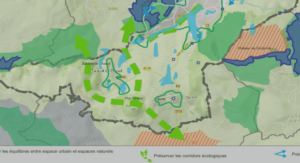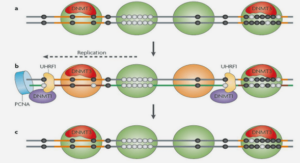Blue mussel density, biomass and maximum size in 2007
Data from 2007 cover a larger spatial scale than historical data and include smaller mussels down to 500 J.1ffi for estimates of denisty. They thus provide the most complete overview ofmussel recruitment (i.e., mean density, biomass and maximum size) of the St. Lawrence system for a given year (Figure 4). Several striking differences were observed. First, no mussel recruitment occurred on buoys in two contrasting regions: the upper estuary upstream of the mouth of the Saguenay River (51 buoys) and the Mingan Islands (7 buoys), in the extreme northern part of the study region (Figure 1). Highest abundance in terms of densities occured in Gaspé Peninsula (up to 19,400 mussels.100cm² ) , the Magdalen island (4,140 mussels.l00cm² ) and on the North Shore near Port-Cartier (14,800 mussels.l00cm²). The same regions were also characterized by higher biomass as was Prince Edward Island (PEI) (up to 212 g.l00 cm² ) where densities were quite low (1 ,672 mussels.l00cm² ). Not surprisingly then, the large st maximum size was observed around PEI (45.4 mm) although high values were also se en in the Magdalen Islands (31.2 mm) and the southern Gaspé Peninsula (32.4 mm) (Figure 4). Overall these same patterns occurred in 2005 (data not shown) and, to a more limited extent, in the historical data (Fradette & Bourget, 1980).
Multiple linear regressions
Multiple linear regression models explained 47% of the variation in mussel density in 2005 and 49% in 2007, 44% of the variation in mussel biomass in 2005 and 45% in 2007, and 43% of the variation in mussel maximum size observed on buoys on 2007 (Table 1). Variation in density was best explained by salinity for both years (2005: 27%; 2007: 30%). Salinity also explained a significant amount of biomass variation in 2007 (21 %), but SST contributed equally (20%). In contrast, Chl a was the primary factor that explained biomass variance in 2005 (21 %) with salinity and SST combined explaining an additional 25 %. Mussel maximum size (only measured in 2007) was best explained by summer SST (44%). Maximum CUITent velocity explained only a small but significant portion of the variance (1-4 %) in aIl the models except biomass in 2005 (Table 1).
Autocorrelation of environmental parameters
Northern shore
In 2005, the principal environmental factors (SST, Chl a, and salinity) were highly variable over space (Figure 5). There was a strong significant pattern of positive autocorrelation for SST up to 122 km and between 414 to 504 km with negative auto correlations at intermediate distances (176 and 272 km) and at 612 km (Figure 5a), suggesting a patchy pattern with periodicity. Chl a was, however, only positively autocorrelated up to 122 km and negatively correlated at 338 km (Figure 5a) – no positive correlations were seen at greater distances. In 2007, SST and Chl a were also positively autocorrelated up to 125 km and become negatively autocorrelated at greater distances (184 km for SST and 268 km for ChI a; Figure Sb). Autocorrelations of salinity occUITed at much smaller scales (positive at 18 km and negative at 63 km).
Southem shore
As generally seen on the northem shore, environmental factors were positively autocorrelated at smaller spatial scales and negatively autocorrelated at larger scales (Figure 5) suggesting environmental gradients. In contrast, auto correlations were strongest for salinity, SST and maximum CUITent. In 2005, these three factors were positively autocorrelated up to 102 km, after which autocorrelations were only observed for salinity (positive to 169 km and negatively beginning at 240 km). No autocorrelations were observed for ChI a. In 2007, all environmental parameters were initial positively autocorrelated (Salinity, SST, maximum CUITent and ChI a to 196, 112 [likely to 189 km], 67 and 66 km, respectively) and became negatively autocorrelated at greater distances (227,271, 159 and 156 km, respectively; Figure 5d).
Autocorrelations of biotic parameters
Northern shore
In 2005, a positive autocorrelation up to 63 km was observed for biomass but became negative from 175 to 272 km (Figure 6a). Density showed a similar pattern except that significant positive correlations were also seen at 338 km, giving the « U » shaped pattern indicative of a patchy distribution. In 2007, aImost the exact patterns were seen again, except no positive autocorrelation were subsequent observed for density (Figure 6b). For maximum length, positive autocorrelations were seen at most shorter distances (up to 243 km, except at 123 km) and became negative after 386 km.
Southern shore
In 2005, the density in the southern area stayed positively autocorrelated up to 169 km and eventually became negatively autocorrelated at 269 km (Figure 6c). In contrast, positive autocorrelations for biomass were only seen at 30 and 169 km with no significant autocorrelations at intermediate distances. As for density, a negative autocorrelation appeared at greater distance (Figure 6c). In 2007, the maximum distances for positive auto correlations for both density and biomass were shorter (70 and 113 km, respectively), but both again eventually became negative. In contrast to the northern shore, maximum length was only positively autocorrelated up to 70 km, and no autocorrelations (positive or negative) were observed thereafter.
Covariogram
Maximum size data were available as a time series from 1980 to 1985, 2007 and 2008, and thus covariogram analyses of spatiotemporal information were limited to this metric in these years. The covariance of blue mus sel maximum size was positively correlated up to 20 km (Figure 7) after which no significant correlations were observed; however, because of the limited data set, only three classes of distances can be interpreted. Comparisons of these results with similar analyses of environmental data were not possible due to the lack of environmental data from 1980 to 1985.
INTRODUCTION GÉNÉRALE |




